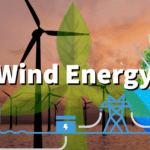In the dynamic landscape of energy management, smart grids have emerged as a revolutionary solution, seamlessly integrating advanced technology to enhance electrical grids’ efficiency, reliability, and sustainability. This article explores the historical evolution of smart grids, the key components that define them, their impact on energy distribution, and their transformative potential for shaping power systems’ future.
Historical Evolution of Smart Grids
The concept of smart grids has evolved in response to the challenges and complexities of traditional electrical grids. While the foundational principles of electricity distribution date back to the late 19th century, the need for a more adaptive and responsive grid became apparent with the rise of modern technologies in the latter half of the 20th century.
Technological Advancements – Catalyst for Change
Integrating digital technologies, communication networks, and advanced sensors paved the way for the evolution of traditional grids into smart grids. The late 20th and early 21st centuries witnessed a paradigm shift as smart grid technologies began redefining how electricity is generated, distributed, and consumed.
Early Implementations – Building the Framework
Pilot projects and early implementations of smart grid components started to emerge globally. These initiatives aimed to test and refine the technologies that would form the backbone of smart grids, laying the foundation for a more resilient, flexible, and intelligent energy infrastructure.
Key Components of Smart Grids
Smart grids leverage interconnected technologies to enable real-time communication, automation, and data analytics. Understanding the key components is essential for grasping the holistic nature of smart grid systems.
Advanced Metering Infrastructure (AMI) – Empowering Consumers
It deploys advanced metering systems that provide real-time data on energy consumption. Smart meters enable consumers to monitor and manage their electricity usage, fostering energy conservation and offering greater control over electricity costs.
Sensors and Automation – Enhancing Grid Visibility
Integrating sensors throughout the grid enhances visibility and enables rapid response to electricity demand and supply changes. Automation technologies facilitate self-healing capabilities, minimizing downtime and optimizing the grid’s overall performance.
Communication Networks – Enabling Data Exchange
It uses robust communication networks to facilitate seamless data exchange between components. These networks enable real-time monitoring, control, and coordination, ensuring a dynamic and responsive energy distribution system.
Energy Storage – Balancing Supply and Demand
Energy storage plays a pivotal role in smart grids by storing extra energy during periods of low need and releasing it when demand is high. Battery technologies and other storage solutions contribute to grid stability and resilience.
Impact on Energy Distribution
Implementing smart grids has transformative effects on how energy is distributed, consumed, and managed within communities and regions.
Enhanced Reliability – Minimizing Downtime
It offers enhanced reliability through real-time monitoring and rapid response capabilities. Automated systems detect and address issues, such as equipment failures or outages, before they escalate, minimizing downtime and improving overall grid resilience.
Integration of Renewable Energy – Supporting Sustainability
Smart grids encourage the integration of renewable energy sources, such as solar and wind, into the electrical grid. The flexibility and adaptability of smart grids help manage the variability of renewable generation, optimizing the use of clean energy and decreasing reliance on traditional fossil fuels.
Demand Response – Empowering Consumers
It empowers consumers to manage energy demand actively through demand response programs. Consumers can modify their energy usage based on real-time pricing or signals from the grid, contributing to more efficient and sustainable energy consumption patterns.
Grid Modernization – Adapting to Future Needs
The continuous evolution of technology and energy systems requires a grid that can adapt to future challenges. It provides a platform for ongoing innovation, allowing for the seamless integration of emerging technologies and the evolution of the energy landscape.
Transformative Potential and Future Outlook
The trajectory of smart grids points towards a future characterized by increased efficiency, sustainability, and resilience in energy management.
Electrification of Transportation – Smart Grids and E-Mobility
The rise of electric vehicles (EVs) presents new challenges and opportunities for energy distribution. It plays a crucial role in supporting the electrification of transportation by managing the increased demand for electricity, optimizing charging infrastructure, and integrating EVs into the grid as flexible energy resources.
Distributed Energy Resources (DERs) – Decentralizing Power Generation
Smart grids facilitate the integration of dispersed energy resources, such as rooftop solar panels and small-scale wind turbines. This decentralization of power generation contributes to grid resilience, reduces transmission losses, and fosters a more sustainable and diversified energy landscape.
Cybersecurity – Safeguarding the Grid
Ensuring robust cybersecurity measures is paramount as smart grids become more interconnected and reliant on digital technologies. Ongoing efforts to develop and implement cybersecurity protocols are essential for safeguarding the innocence and reliability of smart grid systems.
Conclusion
Smart grids represent a transformative leap in the evolution of energy distribution, offering a dynamic, adaptable, and intelligent framework for managing electricity in the 21st century. From empowering consumers to optimizing renewable energy integration, the impact of smart grids extends across the entire energy landscape. As technology advances and smart grid implementations become more widespread, the vision of a resilient, sustainable, and efficient energy future becomes the sharper focus, heralding a new era in the evolution of electrical grids.












